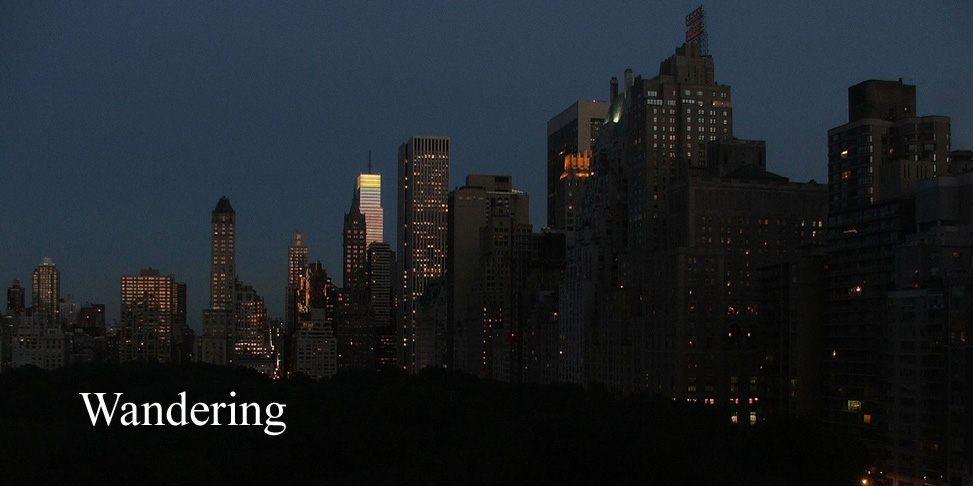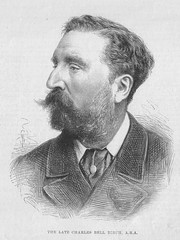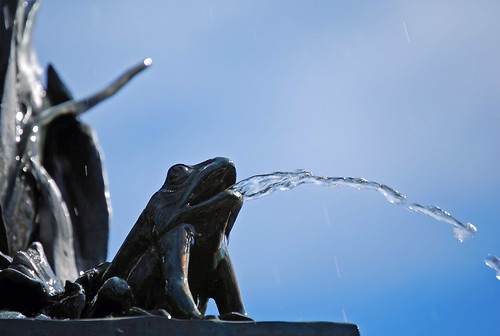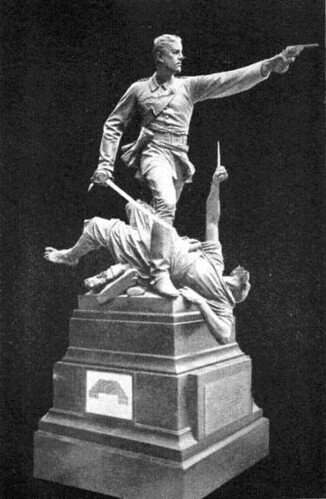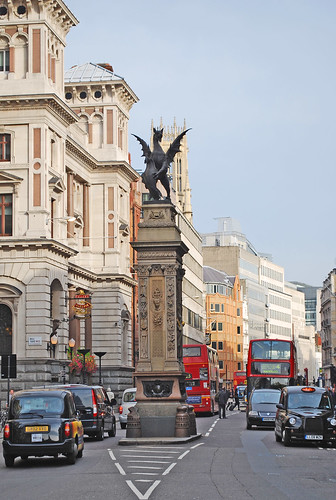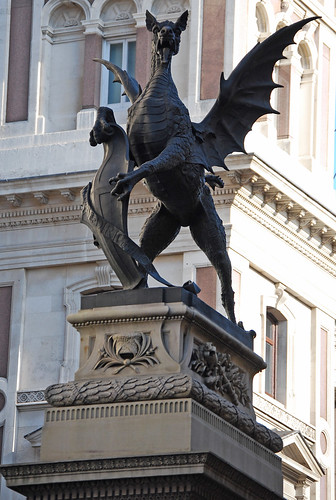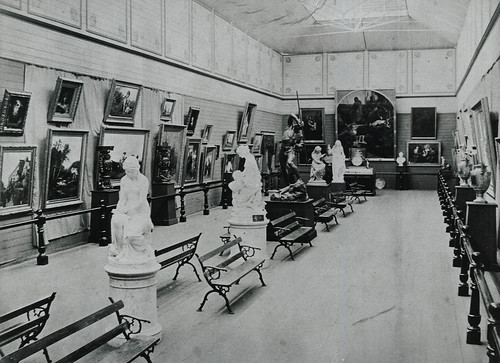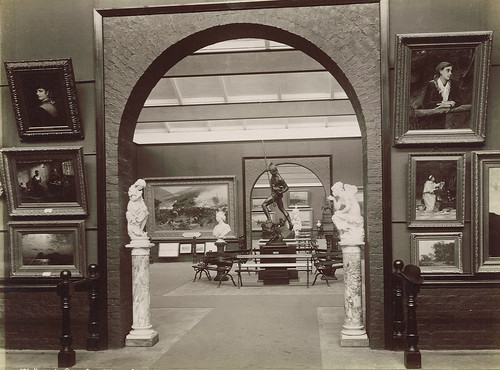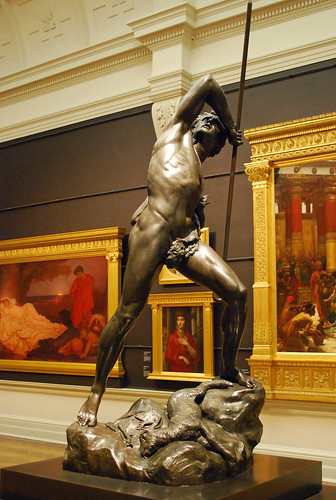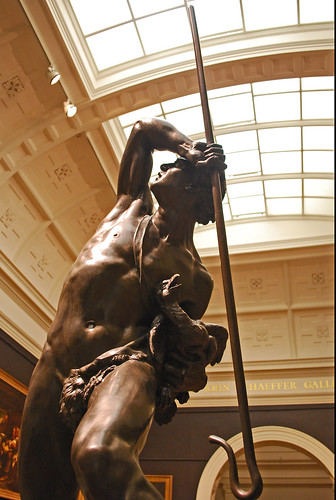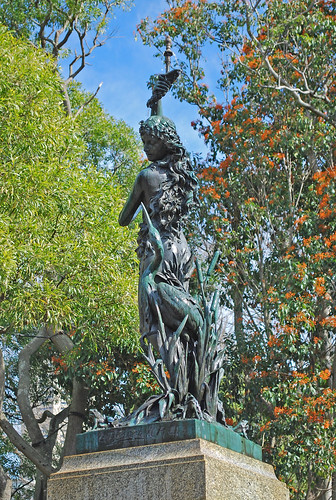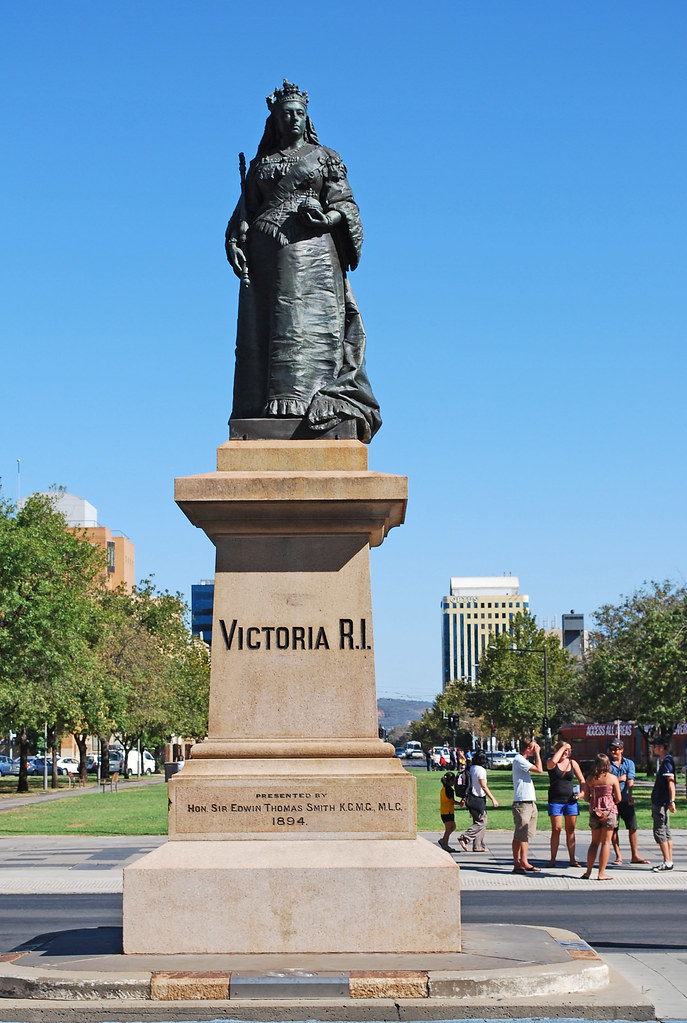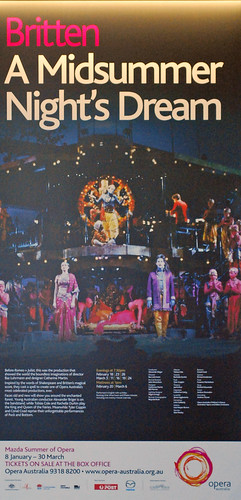
Opera Australia has revived Baz Luhrmann's 1993 production of Britten's AMidsummer Night's Dream. Tempus fugit. It's hard to imagine that I first saw this show almost 20 years ago.
It was absolutely magical. Magic has a lot to do with first impressions as Shakespeare's play itself shows, so it's not surprising that the sense of wonder created by the first performance fades a little the more you see it, but it remains an excellent production. I am interested to explore why this is so: the removal of the action from ancient Athens to a bandstand in an India ruled by George V, is a substantial change, but it hardly seems to matter at all.
When W.H.Auden came to The Merry Wives of Windsor in his lecture series on Shakespeare's plays given in New York in 1947 he said:
"The Merry Wives of Windsor is a very dull play indeed. We can be grateful for it having been written, because it provided the occasion for Verdi's Falstaff, a very great operatic masterpiece. Mr. Page, Shallow, Slender, and The Host disappear. I have nothing to say about Shakespeare's play, so let's hear Verdi."
Britten's Dream is also a very great operatic masterpiece, but we can't dismiss its source so abruptly. Britten and Peter Pears collaborated on the libretto. They edited the text of the play so as to reduce it by about half but they made very few alterations to the words.
However, their excisions alter the balance of the play. Act I Scene 1 set in the Palace of Theseus almost entirely deleted and Scene 2 is deferred, so that the opera begins with the chords which are so evocative of the deepening night, and the entrance of the fairies. The fairies are a new character: they replace a single fairy who doesn't have much to say and appropriate many of Puck's lines as well. Britten had a precedent. Verdi did the same thing when he transformed the witches in Macbeth into a chorus.
I haven't counted the lines but I suspect that most of what Oberon, Titania, Puck and now the fairies have to say is retained from the play. But it's not only this, and their placement at the beginning of the opera which gives them much more prominence; Britten has given much of the most memorable music to Oberon from
"I know a bank where the wild thyme blows... ", and
"Be it on lion or bear or wolf or bull ..." to the wonderful concluding music which sets
"Now, until the break of day...".
It was a masterstroke to give this music to a countertenor.
In his lectures, Auden says that in A Midsummer Night's Dream, Shakespeare: "..mythalogically anthropomorphises nature, making nature like man.." so that "..mythological characters are used to describe certain universal experiences which we cannot control." In other words, the fairy characters animate nature and personify the psychological forces which influence the behaviour of the lovers. By giving this aspect of the play greater prominence, Britten has shifted our focus from the human drama to the mysterious forces at work in the wood.
I don't know anything about Hindu religion, but it seems to me that by giving the fairy characters an Indian persona Baz Luhrmann has found in a polytheist, or perhaps animist, religion a good analogy with Britten's version of the play. It fits the music perfectly even if we don't take into account the way in which much of the movement has been carefully choreographed to fit the score. The whole concept enhances the work and does not, as happens too often, attempt to substitute some half thought out idea of the director for the genius of the piece being performed.
There are a couple of references to India in Shakespeare's text which were probably the jumping off point for the Indian setting, but in themselves these would have been insufficient basis for it. References to Athens are retained and are superficially inappropriate, but because the idea as a whole is in harmony with the way the opera works, although they intrude a little, they don't grate.
The set, which places the orchestra in the bandstand on the stage and extends the acting area at the front is also helpful. It replicates the thrust stage, copying the theatres of Shakespeare's time, which has returned to use in the modern theatre.
One reason the production works so well for us is that it is modern in this sense. It's modernity also reflects Britten. His mysterious and sensual score is very different from Mendelssohn's familiar incidental music which sounds trivial by comparison. Mendelssohn's music was, it seems to me, perfectly in accord with the way in which the nineteenth century saw A Midsummer Night's Dream. Arthur Rackham and W. Heath Robinson both produced illustrated editions of the play. They retain classical antiquity as the setting, but the characters are pure fantasy.
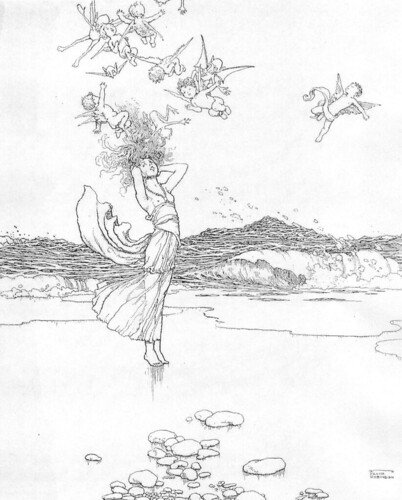
W. Heath Robinson
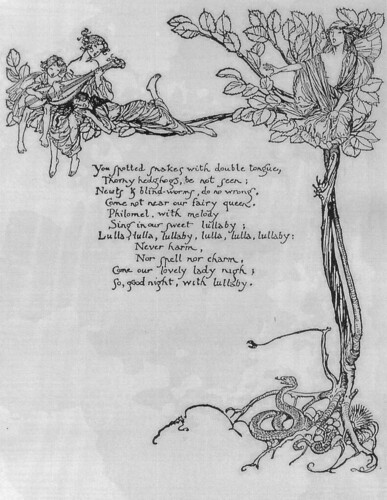
Arthur Rackham
The artists might have seen the play as a delicate and finely worked out farce, amusing but lacking substance. Similarly, in the nineteenth century theatre, Shakespeare's plays were produced with emphasis on costume and pageantry, with, I suspect, a loss of some human interaction and urgency, even in comedy. Although Britten has altered Shakespeare's emphasis, the dark and mysterious forces of nature were always there.
As the opening scene in the palace of Theseus is excised, the relationships between Demetrius and Helena and Lysander and Hermia and their position in relation to Theseus are not as clear as they might be, and the production makes an attempt to overcome this problem by staging some mime between these characters before the music begins. As the scene is brief and without words, it cannot reproduce pages of missing text, but it is another example of the way in the production is faithful to both the opera and the play.
There is usually much more in a production than can be taken in, unless you see the performance a number of times and pay close attention. And when a show is revived more than once, the director may well make changes, which can play with memories of earlier times. For example, I don't remember seeing the removal of Oberon's finger nails ( or are they fingers), before. When Oberon first appears his hands are more like claws, with long spiky nails. Later on, when his mood has improved, and he is about to be re united with Titania these are removed leaving him with hands of normal proportions. This represents the substantial change which occurs once Oberon has his own way and takes possession of the changeling boy from Titania.
What are we to think of Oberon when we first see him in vengeful mood ? I would have thought he was more scheming and mischievous than malicious, but I found another opinion in Kobbe's opera book. The article by Lord Harewood on the opera quotes David Drew, writing of the first performance in the New Statesman:
"Whether intended or not Britten's Oberon is a more grimly effective horror than the Peter Quint who called from the Tower and had no Puck to help him." Peter Quint, who appears in Britten's Turn of the Screw is a wholly malevolent character who hardly needs a Puck to help ( though he has help of a different order from Miss Jessel.) Apart from Britten's use of the celesta in the accompaniment of both characters, I find nothing in common between them. The music creates an atmosphere of mystery, even unease, but it is hard to find evil personified in the remarkable settings of the verse which I have mentioned.
Even assuming Oberon's falling out with Titania is malicious, his intervention in the lovers' affairs is at worst mischievous, even though it goes wrong at first. Then, as the fingernail removal shows, he becomes quite a benign figure, and his singing of "Now until the break of day", is a dramatic and musical resolution of the whole piece.
In the current OA production Oberon is effectively portrayed by Tobias Cole, who I was lucky enough to hear a couple of years ago singing Orpheus on Orpheus Island as part of the Australian Festival of Chamber Music.
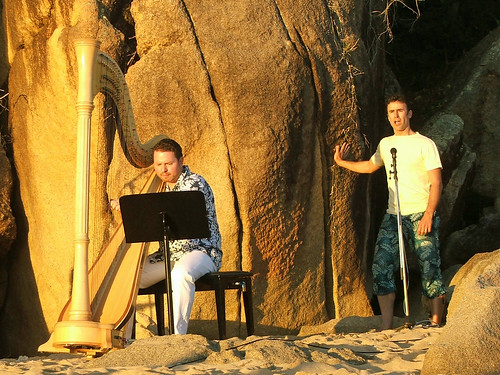
Tobias Cole and Marshall McGuire on Orpheus Island (July 2006)
He also sang the title role in Handel's Julius Caesar to great effect.
The role of Titiania suited Rachelle Durkin's voice perfectly. The cast was uniformly excellent. The overall quality of the singing at Opera Australia seems to get better year by year.
When I first saw this production long ago in 1993, it seemed that the appearance of the rustics in military uniform was an affectionate tribute to the television comedy It Ain't Half Hot Mum. That show is so lost in the past that it took me a while to remember the probable reference to it; and when I checked I found that its production run ended about ten years before this Dream was first seen. I think most people still remembered it then however.
There is an excellent summary of the musical techniques used in the opera in Michael Kennedy's book on Britten in the Master Musicians series. He describes the music for the play performed by the rustics as:" (an) extended, affectionate and musically very witty commentary on the conventions of the Donizetti type of Italian opera.." and suggests that:
"Provided the singers do not overplay it, it is a scene that yields fresh delights at each renewal." Those delights are denied us here, as the play is performed as broad farce. It's amusing, but it would be interesting to see a performance in which the music did more of the work.
After the play, the lovers gather for a group photograph taken by a bellows camera with a magnesium flash. This is a fairly early example of this cliché in recent opera productions around the world.

